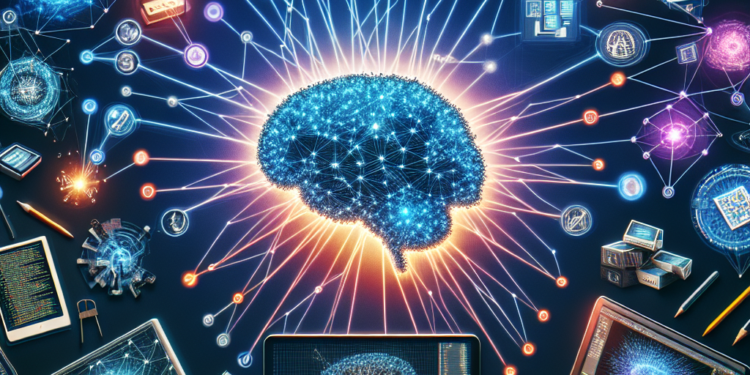Artificial Intelligence (AI) is revolutionizing the way creative professionals work by providing new tools and technologies to enhance workflows and streamline processes. From generating design ideas to automating repetitive tasks, AI-driven hacks are transforming the creative industry and empowering artists, designers, and marketers to work more efficiently and effectively.
One of the most significant benefits of AI-driven hacks for creative workflows is the ability to generate new ideas and inspiration. AI-powered tools can analyze data, trends, and patterns to suggest creative concepts and designs that may have otherwise gone unnoticed. For example, platforms like Adobe Sensei and RunwayML can analyze thousands of images to identify common themes, colors, and styles that can inspire new creative projects.
AI can also help artists and designers overcome creative block by providing suggestions for color schemes, fonts, and layouts. By using machine learning algorithms, AI tools can analyze a designer’s previous work and preferences to suggest relevant ideas and alternatives. This can be particularly helpful when working on tight deadlines or when seeking fresh perspectives on a project.
In addition to generating ideas, AI-driven hacks can also speed up the creative process by automating repetitive tasks. For instance, tools like Grammarly and Hemingway Editor can help writers improve their writing by suggesting edits, rephrasing sentences, and checking for grammar mistakes. This can save time and effort by reducing the need for manual proofreading and editing.
AI can also be used to automate the process of generating visual content, such as creating personalized graphics, videos, or animations. Platforms like Canva, Piktochart, and Animoto offer AI-powered features that can automatically adjust images, videos, and text to create custom designs based on user preferences. This can help designers create high-quality content quickly and efficiently, without the need for a graphic designer or a video editor.
Another AI-driven hack for creative workflows is the use of predictive analytics to optimize marketing strategies and campaigns. By analyzing data and consumer behavior, AI tools can identify trends, predict outcomes, and recommend actions to improve marketing performance. For example, tools like Google Analytics and Salesforce Einstein can analyze website traffic, social media engagement, and email campaigns to provide insights on how to reach target audiences and drive conversions.
AI can also be used to personalize content and messaging based on individual preferences and behaviors. By collecting and analyzing data from multiple sources, AI tools can create customized experiences for users, such as personalized product recommendations, targeted ads, and tailored email campaigns. This can help marketers connect with customers on a deeper level and improve overall engagement and conversion rates.
One of the most exciting applications of AI-driven hacks for creative workflows is the use of generative adversarial networks (GANs) to create original artwork and designs. GANs are a type of machine learning algorithm that can generate new content by learning from existing data. Artists and designers can use GANs to create unique, one-of-a-kind pieces of art, such as paintings, illustrations, and digital sculptures.
For example, digital artist Robbie Barrat used a GAN to create a series of AI-generated nude portraits that were featured in a gallery exhibition. By feeding the GAN with thousands of nude paintings from art history, Barrat was able to train the algorithm to generate new compositions that blended elements from different artists and styles. The resulting artwork was both compelling and controversial, sparking a debate on the role of AI in the creative process.
AI-driven hacks are also being used to enhance collaboration and communication among creative teams. Tools like Slack, Trello, and Asana offer AI-powered features that can streamline project management, automate task assignments, and facilitate real-time communication. By using AI to coordinate workflows and track progress, creative teams can work more efficiently and effectively, regardless of their location or time zone.
Furthermore, AI can help creative professionals stay organized and focused by providing personalized recommendations and reminders. Tools like Todoist, Evernote, and Microsoft To-Do use AI algorithms to analyze user behavior and preferences to suggest tasks, deadlines, and priorities. By harnessing the power of AI, creatives can prioritize their time and energy on the most important projects and tasks, leading to increased productivity and satisfaction.
Despite the potential benefits of AI-driven hacks for creative workflows, there are also concerns about the ethical implications and implications of using AI in the creative process. For example, there is a risk that AI tools may replace human creativity and originality, leading to a homogenization of artistic styles and ideas. Additionally, there are concerns about data privacy, security, and bias in AI algorithms that could impact the quality and authenticity of creative work.
To address these challenges, creative professionals should approach AI-driven hacks with caution and critically evaluate the impact of these tools on their work and creative process. It is essential to strike a balance between using AI to enhance productivity and innovation while preserving individuality and artistic expression. By leveraging the power of AI responsibly and ethically, creatives can unlock new opportunities, improve workflows, and push the boundaries of creativity in the digital age.
In conclusion, AI-driven hacks are transforming creative workflows by providing new tools and technologies to enhance productivity, generate ideas, automate tasks, and optimize marketing strategies. From generating design concepts to creating original artwork, AI is revolutionizing the way artists, designers, and marketers work and collaborate. By embracing AI-driven hacks responsibly and ethically, creative professionals can unlock new possibilities, drive innovation, and shape the future of the creative industry.













